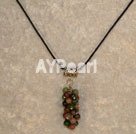In ancient times, just as today, jade was used for personal adornment. Rings, bracelet, pendants, beads, and other personal ornaments all caved from jade appear very early in history.
The ring disk - a symbol of heaven - is worn as a talisman even today. Discount jade bracelets believed to offer protection against rheumatism are still worn in some parts of China.
Cheap jade has long been treasured in China as the gemstone associated with royalty. Due to jade's extreme hardness, it possibly may have once been used to craft tools and weapons early in history. However, china jade is also very brittle, and the early fashion jade artifacts that have been uncovered appear to have had symbolic purposes as opposed to practical ones.
Knives, daggers, and scepters crafted from jade were used in religious or military ceremonies in China. Similarly, the Maori of New Zealand used clubs of jade to represent authority.
Jade is prized for its hardness, glassy luster, and rich translucent colors. While it’s most popular color is green, which is usually a rich and intense green with a greasy finish, Jade can actually come in a wide variety of colors including white, grey, yellow and orange.
When pricing jade the overall color is the most important factor, though attention is also paid to the translucency, texture, and also to pattern in the stone.
Certain patterns, such as the one called "moss in snow", are highly valued. Jade historically comes from two distinct minerals jadeite and nephrite, today it is jadeite jade that is considered the genuine article, commanding much higher prices than nephrite because it comes in far more vivid green colors and has a finer translucency.
Jade of one type or another can be found in Burma, China, Central America, Brazil, Canada, Japan, India, Siberia, Finland, Tanzania, and elsewhere; in the United Sates, it occurs in California as well as in the northeast and southwest of the country.






 Log in
Log in Register
Register










